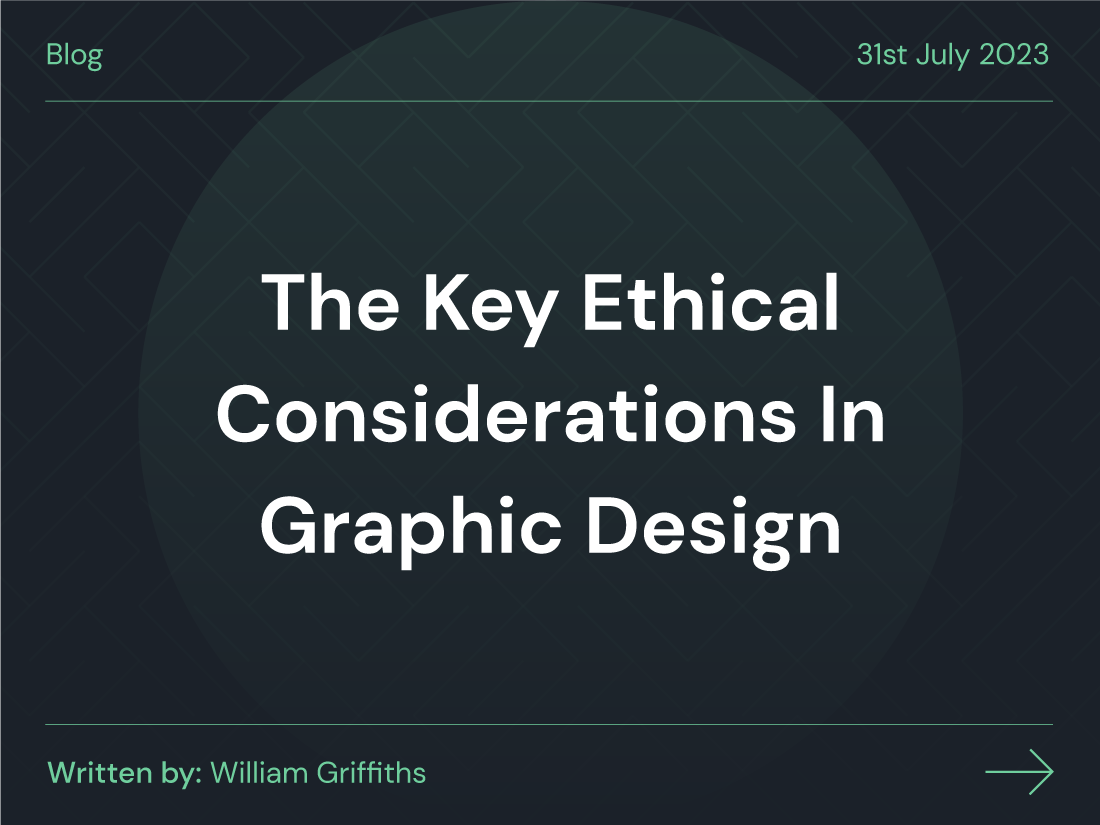Colour Theory in Design: Mastering the Art of Colour Harmony
Colours are part of our everyday lives, and they have been since the beginning of our existence - which is probably one of the reasons why they’re talked about in pretty much every field and industry. The colours you favour or the ones you use in any given project can completely alter the trajectory of what you’re trying to achieve, and that isn’t an understatement.
Many ‘finer’ elements within this genre can be discussed, and today, we want to take a look at the art of colour mixing, colour harmony and a good old-fashioned colour wheel. These subjects intertwine with one another, and they all have the same purpose, with the goal being to find the colour that’s right for the consumer - regardless of what it’s for.
Our aim is to run through some definitions and give everyone reading this a clearer picture of what it is they’re looking at. Yes, many decisions in business can come down to gut instinct, but selecting the right colour is often much, much trickier than it initially seems.
Get ready because it’s time to picture yourself heading down the streets of Rainbow Road.
What is colour?
Colour is the way in which so many of us see the world. It is the visual representation of everything we look at on a day-to-day basis, with colours being perceived in the visible light spectrum with different types of cone cells. Colours have different properties, they represent different emotions, and they have a grander meaning than just looking pretty or dull.
It is the aspect of an object, no matter how big or small, that can be described with hue, light, saturation and more. Electromagnetic radiation is a big part of the process, with a range of wavelengths being visible to us as humans, with an object being able to absorb light or reflect light. So, as you can tell, you need some light to make all of this happen.
It’s how we differentiate items, it’s how we understand the world, it’s how we function. Well, not quite, but we imagine you’ll see where we’re coming from as we continue through this venture.
What is colour theory?
They say colour is in the eye of the beholder, and, for the most part, they’re right. Colour theory, though, brings a scientific edge into the conversation. It’s how we understand the way in which humans perceive colour, as well as the visual effects of how two or more different colours can mesh together with one another. It’s remarkable, really, and it’s something that takes a while to really grasp.
Colours can affect us in ways that we can’t even fathom. They can take our emotions and spin them around in a complete 180 before we even have a chance to figure out what happened. For those wanting to find the right mood or message in what you’re producing, whether it be personal or professional, you’ll be much further along if you can understand colour theory.
A parade of scientists, writers and general hobbyists have created charts, diagrams and examples of how colour theory can impact society, dating all the way back to the 18th century. One of the founding documents came in the Theory of Colours in 1810, created by German poet Johann Wolfgang von Goethe.

The colour wheel
A colour wheel is something that we’ve probably all seen at one point or another throughout the course of our lives, and for good reason - because it’s exceptionally educational. It’s an illustrative way in which to showcase the relationship between primary, secondary and tertiary colours, with one of the first pieces of evidence of the idea coming from Isaac Newton hundreds of years ago.
Artists and designers from around the globe have since used the wheel in order to create colour harmonies, colour mixing and different palettes that would fit what they’re trying to achieve. From a quick glance, it can just look like you’re examining the shades of different colours and how they line up next to each other, but that’s not quite how it works.
The three primary colours are, of course, the main characters, followed by a handful of secondary characters, finished off by the tertiary colours that can be found on every other spot on the wheel.
For a deeper dive, let’s break down how they all come together.
Primary
There are three primary colours that make the world (or wheel) go around. These colours are red, yellow and blue. These are the colours that set everything else in motion from top to bottom, and they help to create many of their ‘peers’, if you will. It’s quite the journey they go on when you really think about it, but in essence, red, yellow and blue are your main contenders to watch out for.
Secondary
Secondary colours represent colours that are created when primary colours are mixed together, which many of you would’ve come to learn about many years ago when you first started painting. The three colours in question that tend to fall under this jurisdiction are green, orange and purple, and as you can probably tell, we’re starting to get a bit more flamboyant already.
Tertiary
Tertiary colours have been made from primary and secondary together, and on the standard colour wheel, they take up six of the twelve spots. They have specific names in the modern realm, but for now, we’ll list them as follows: red-orange, yellow-orange, red-purple, blue-purple, blue-green and yellow-green, which concludes our rundown of all of the main players on the board.

The colour mixing models
It became pretty clear early on that colour mixing was a very real thing that could be done in order to change and influence the way in which your work is presented. In the blink of an eye, you could have one colour, and then in the next, you could have something entirely different. It was, and still is to this day, a game changer.
It’s all about finding new ways to form them. For now, our objective here is to take you through a few colour mixing models, show how they work, and why they’re used. With that being said, let’s dive right into it.
Additive
As we, as humans, see colours in light waves, additive mixing predicts the appearance of colours that are meshed together by red, green and blue lights under various levels of intensity. The more light you add to the equation, the brighter it becomes, with additive models most commonly being used in electronics such as with projectors and TV screens.
Subtractive
On the flip side, you have subtractive, which you’re far more likely to see on printed pieces of work as opposed to something digital. While subtractive formerly used red, yellow and blue, they now use cyan, magenta, yellow and key/black, which makes up the term CMYK that many know. This colour combination helps distinguish it even further from additive mixing.
Average
Average mixing leads to an entirely new colour being created out of two component colours, with the brightness being equal to the average of the first two colours. There are a total of eight primary colours with average mixing: white, cyan, magenta, yellow, green, blue, black and red, and you’d typically use up to four of those to achieve a brand new colour.
Colour wheel categories (hue, tint, tone, shade)
Within the crazy world of your average colour wheel, you’ll hear words like hue, tint, tone and shade being thrown around a great deal. These are terms that have been around for a long time, and we feel as if it’s important to highlight them and give some understanding to those who may hear one of these words and immediately check out of a conversation. Don’t worry, we get it, but it’s actually pretty interesting.
The hue refers to the dominant colour family of all the colours we happen to be looking at, with primary and secondary colours (as mentioned above) often being seen as hues in a colour. So, then, you’re unlikely to see white and black being described as such.
From there, we have the tint. The aim and definition of a tint is to lighten the colour, giving it a softer touch - but without actually making it brighter. It may seem that way at first glance, but it isn’t, with another way of describing it being ‘paler’. So, if you’re using even the smallest amount of white, you’re bound to accomplish this goal.
As for toned colours, these are seen as colours that are believed to be much easier to look at. They are perhaps ‘stronger’ and more sophisticated with a brighter appearance, being able to stand out amongst the crowd. Any hue or mixture of primary colours, with a touch of grey, can help you get to this point, but you need to be careful not to mix it in too much.
Finally, we have shade - with the ambition of shade being to darken the colour at hand. When you take a hue or mixture of primary colours and add some black, you’re going to get a shaded texture that wasn’t there before. As we know to be true in everyday life, the absence of bright light from the sun can create this effect, and that transitions over to colours.

Colour harmony
That brings us to the heart of the issue: colour harmony. In essence, colour harmony refers to the property that certain colour combinations have that make them aesthetically pleasing. While the nature of this definition means that it can be interpreted in different ways, we do tend to see a few variations being brought to the forefront more than others.
The majority of these harmonious colours sit right next to one another on a standard colour wheel. As such, you can probably picture that green and yellow blend together quite nicely, as is the case with blue and purple, red and purple, and blue and green. There are three-colour harmonious sets, five-colour harmonious sets, and from that point, you have sets that relate directly to a specific topic.
For example, the weather. Red and orange are going to blend together nicely to represent a warm sunny day, whereas the opposite is true for a cold winter night with blue and purple.
In equal measure, black and grey could fit nicely for a company or event that’s got a darker tone - with pink and generally lighter colours being utilised to highlight a more upbeat tone.
Need help with colour harmony? Contact Hatchly!
At this point, you’ve probably seen the word colour so much that you can’t get it out of your head. For the time being, we see that as a good thing. Our mission statement in this piece was to really get into the nitty-gritty of the complexities that lie behind the eyes of different colours and why we consider them to be so fascinating. It may seem dull to others, but we believe there’s a real benefit to understanding this both on a personal and professional level.
Beyond that, we also want to introduce ourselves. Here at Hatchly, we operate as a company that offers unlimited graphic design services for the world to see and enjoy. We have a dedicated, hard-working team of professionals behind us, and they are ready and willing to give you as much assistance as you could possibly desire.
Whether it be related to which colours to use on a logo or how two colours would complement one another on a poster, it doesn’t matter. We’re here for the long haul, folks, and we won’t stop until you’re satisfied.
So, if you feel as if you could benefit from another set of eyes, why not check out our website and feel free to get in touch!







